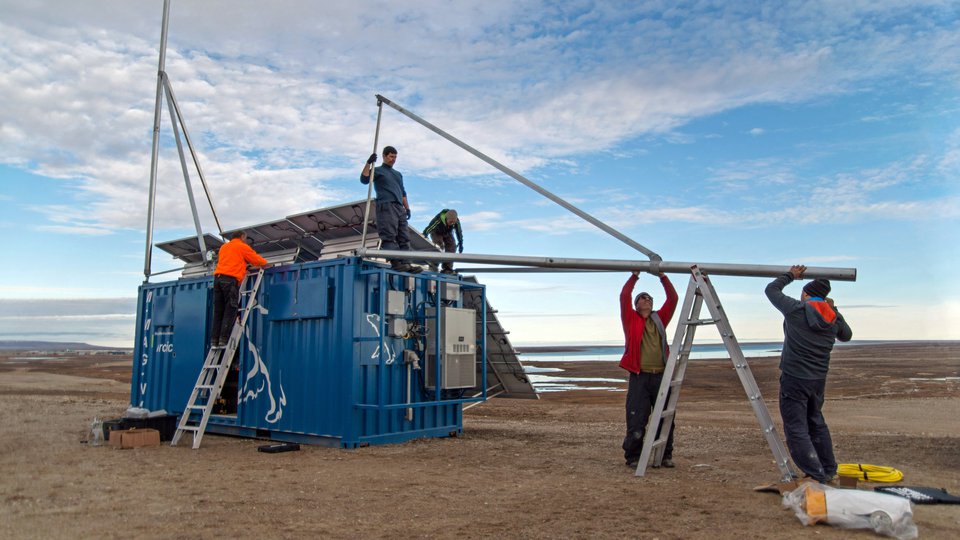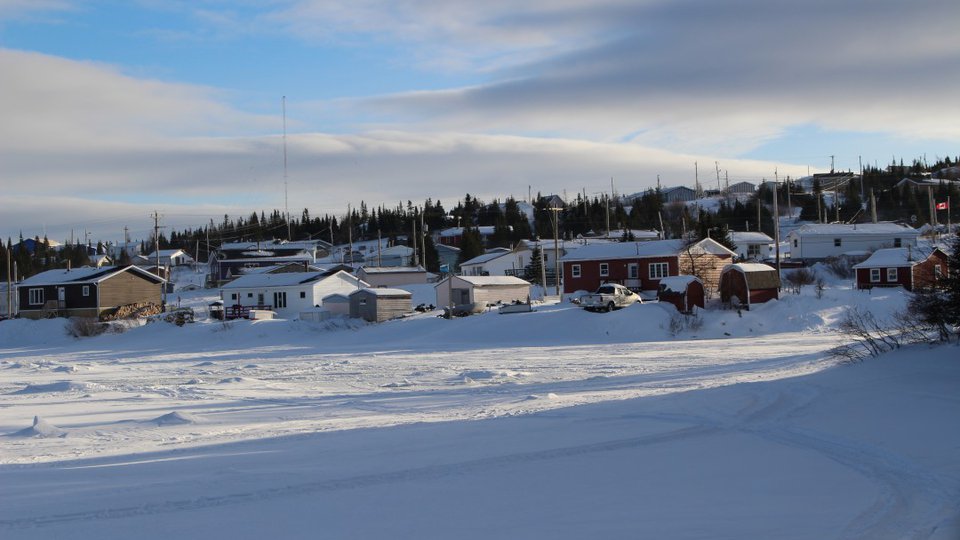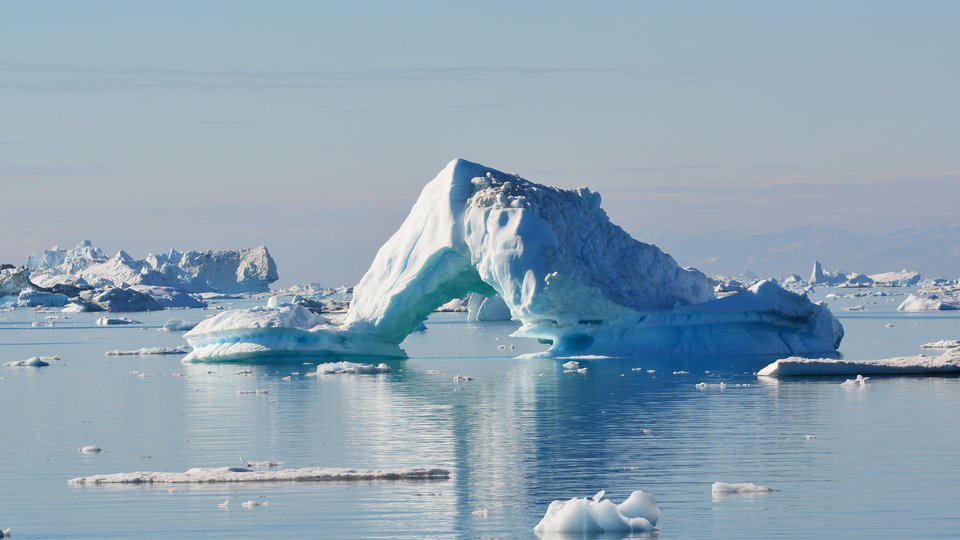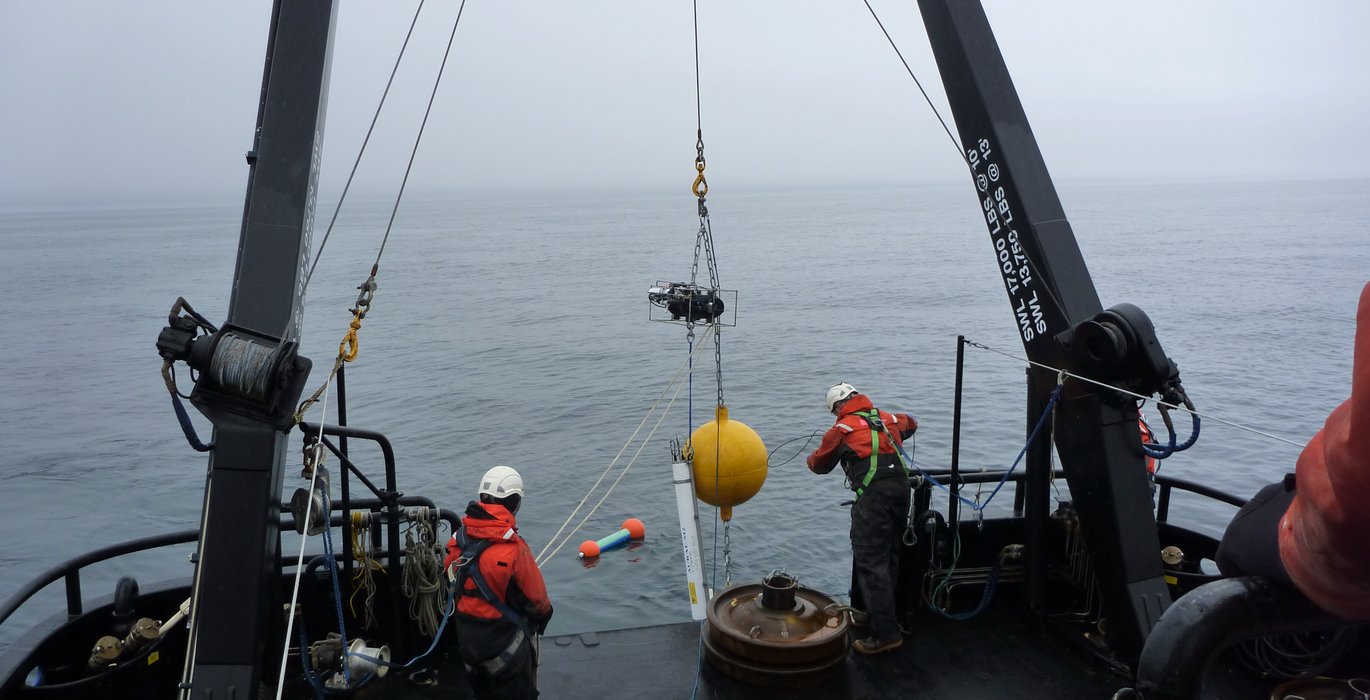
“I listen to climate change in the Arctic,” says Kate Stafford, describing her work as an oceanographer, bioacoustician, and associate professor at Oregon State University. While visual signs, like melting glaciers, are easily acknowledged, it takes a deeper dive to consider the multi-sensory experience that climate change truly is.
People can smell the smoke of climate-fueled wildfires, feel the warmer weather, and even taste differences in crops that go into products like beer. They can also hear climate change, from the sounds of glaciers calving, to the vocalizations of marine mammals popping up further north at unusual times, to the sounds of humans and their vessels veering into areas they couldn’t previously access due to sea ice.
Stafford studies these sounds, and she contributed an article to the 2021 Arctic Report Card called “The Changing Arctic Marine Soundscape” which focuses on the impact the sounds of a warming world have on marine life.
The Arctic’s underwater soundscape is getting louder due to climate change. Storms can produce a lot of noise through wind and waves, but this noise can often be buffered by sea ice. When the sea ice isn’t there—or it’s there for shorter periods—the overall soundscape can get louder. This includes natural noises like wind and waves—though climate change is also impacting storms—as well as human-caused noise, such as from vessels.
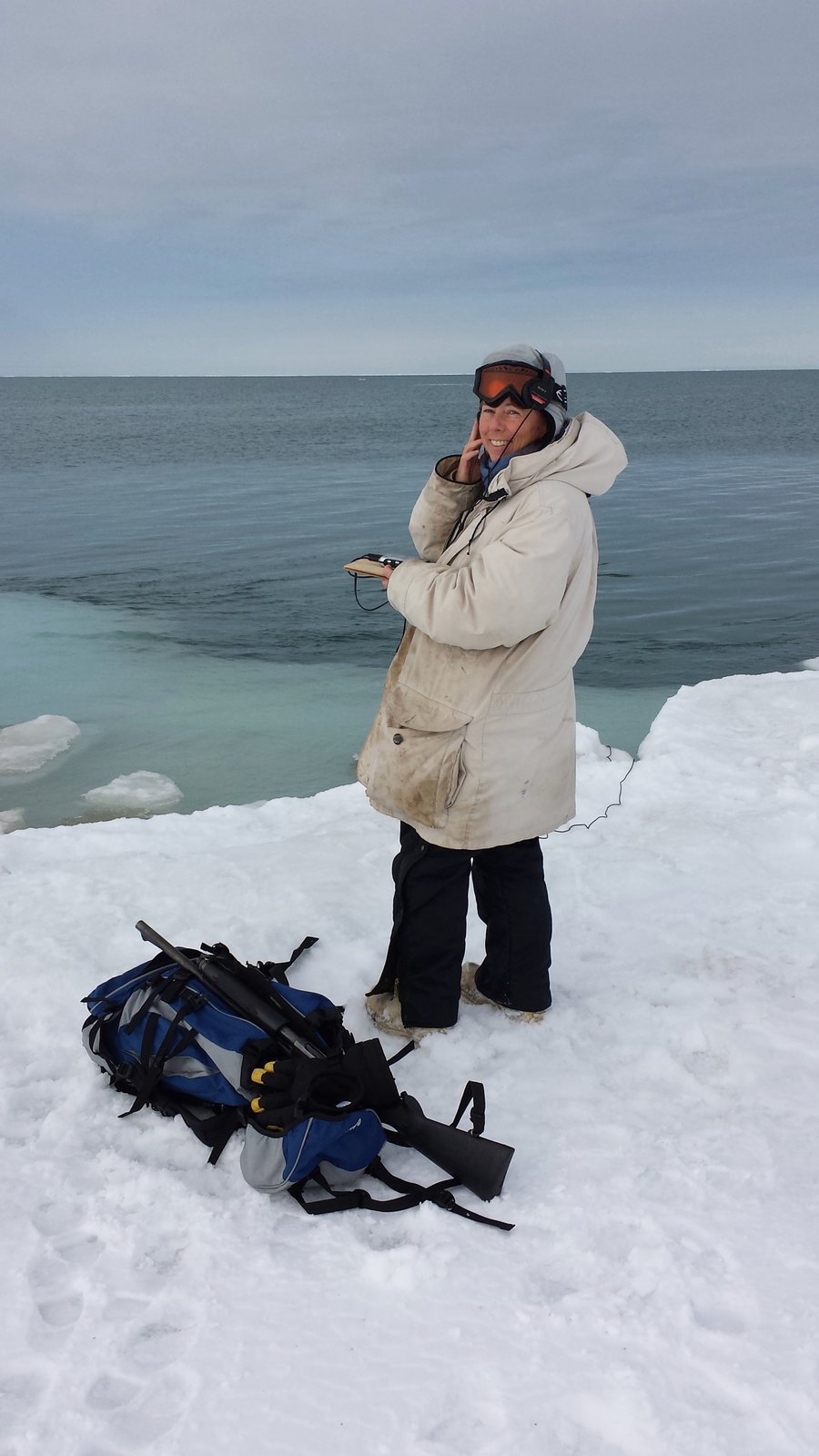
Kate Stafford is an oceanographer, bioacoustician, and associate professor at Oregon State University. (Photo: Kate Stafford)
Shipping traffic is increasing as sea ice melts, opening up new pathways for vessels that significantly reduce transit time between the Pacific and Atlantic oceans. Stafford’s 2021 article notes that researchers found “ambient noise levels are increasing in the frequency bands used by marine mammals” in these areas.
The European Union considers noise a pollutant with significant impacts on human health, so it’s not surprising it also impacts animals in numerous ways.
“Noise is a pollutant, because it impacts the very health of animals,” Stafford says. “It impacts our health and impacts the ability of animals to make their way in the world. So it's just another challenge that animals who are already subject to a changing climate are having to deal with.”
Soundscapes are different throughout the region, and the topography of the ocean (called bathymetry) varies widely. Some areas include deepwater passages, while other places are characterized by shallow shelves, and numerous other features are present in Arctic regions. “The Arctic is not a homogenous area. It's incredibly variable,” Stafford says.
“Overall with less ice and increased storminess, we're getting higher noise levels in the Arctic.”
Kate Stafford
In order to study sounds in the ocean, Stafford and colleagues use an assortment of tools like hydrophones on cables that are dipped into the water from the edge of sea ice, underwater microphones on fixed moorings that are anchored to the seafloor for longer periods of time, and gliders, which are instruments on mobile platforms that can move around like underwater robots and record sounds.
These types of tools provide opportunities to listen in harsh environments and remote areas. They can also monitor large areas underwater. While boats and airplanes can make visual observations when the weather is good and the sun is out, recording sound offers a 24-hour-a-day peek into the underwater world, even when it’s dark and the weather is terrible. Technology has advanced in recent years, along with the capability to analyze the massive amounts of data devices can collect when detecting sounds for a year or more. However, Stafford says these tools aren’t perfect.
“The big caveat is that the animals have to be making sound for us to hear them, but fortunately they do make sound fairly often,” Stafford says. “But again, we're only really discovering things about vocal animals, we don't know what the quiet ones are doing.”
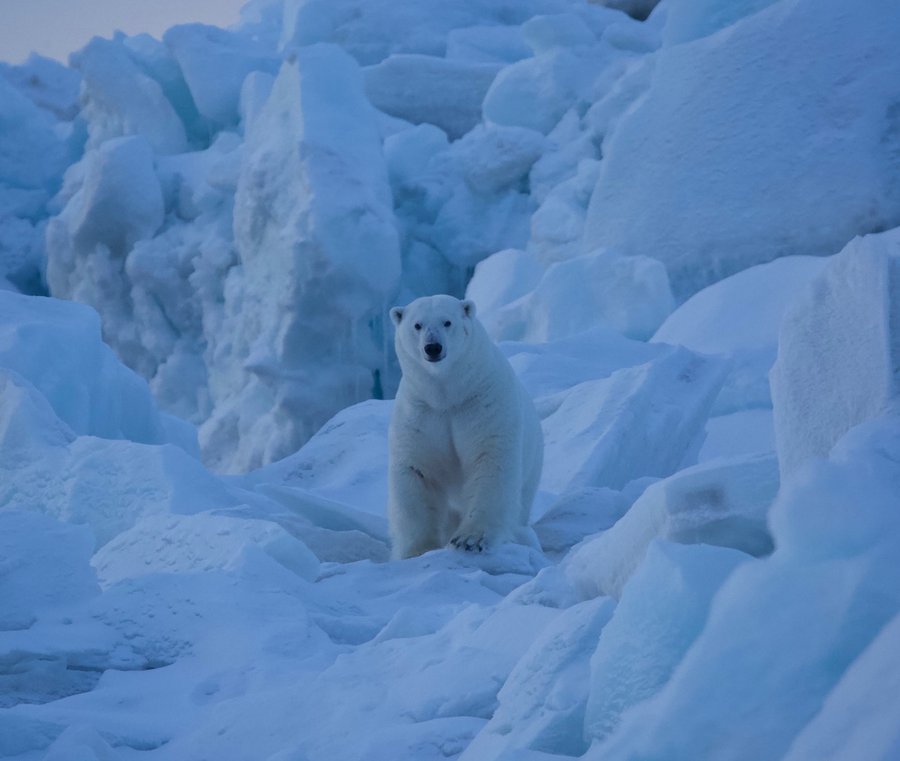
Biophony includes biological sounds such as the noises from animals. (Photo: Kate Stafford)
Underwater sounds
Sounds in the ocean generally fit into three categories: geophony, biophony, and anthrophony.
Geophony includes the sounds of the earth and atmosphere, including breaking waves, wind, underwater earthquakes, volcanoes, and noise from ice. While sea ice can act as a buffer to make the acoustic environment quieter, it also can create quite a bit of noise through pressure ridges, cracks, the sounds of ice forming and deforming, and other sounds in many different frequencies. During a big storm, moving ice can also create a cacophony of sounds, with screeching, cracking, groaning, and other big, loud noises.
Stafford noted in the 2021 paper, “The ice-covered Arctic can experience some of the lowest ambient sound levels in the ocean due to the lack of wind-driven waves in ice-covered regions,” however changes in sea ice—such as age of ice, thickness, seasonality, and extent, are impacting the underwater soundscape in the Arctic.
“Overall with less ice and increased storminess, we're getting higher noise levels in the Arctic,” Stafford says.
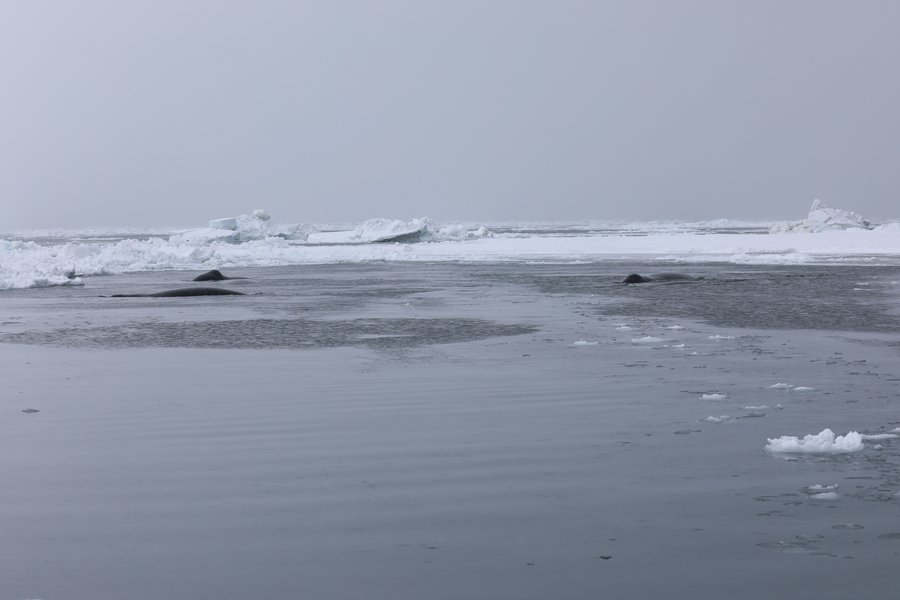
Ship noise is often low frequency, which can overlap with marine mammal frequencies. (Photo: Kate Stafford)
The other type of natural sounds found in the ocean is “biophony.” This includes biological sounds, such as the noises animals make underwater. This includes marine mammals, which use sound to navigate, find food, communicate over long distances, and as part of their reproductive process, such as making vocalizations to attract a mate or compete with rivals. Invertebrates like snapping shrimp can also make sounds, as do fish and other species.
Anthropony refers to noises created by humans. This can include noises from things like undersea exploration for oil and gas (as well as extraction) and ships, including those used commercially, for research, tourism, fishing, cargo, oil and gas tankers, tugs and barges for local villages, and even small skiffs.
The Northern Sea Route and Northwest Passage are two routes being used in the Arctic to create a faster journey for ships traveling between the Pacific and Atlantic Oceans. Rather than going through the Panama Canal or even the Suez Canal, ships cross the Arctic, which is faster and requires less fuel. Since ships are becoming increasingly able to traverse these areas throughout the year, they are in critical habitat areas for species like bowhead whales, belugas, and walruses in the middle of the winter when it’s dark and animals are not visible to passing ships.
Much of this ship noise is low frequency, which can overlap with marine mammal frequencies, making it more difficult for animals to communicate, navigate, and use sound for other purposes.
“The Arctic, for a very long time, has been really quite quiet, or when it's loud it's a signal they're familiar with,” Stafford says. “But many Arctic species, we suspect they are quite naive to some of these external sound sources.”
Increasing ambient noise levels can also impact how marine mammals can communicate since sound is so vital for these species. “Sound is the most important sense,” Stafford says. “For most marine animals, light does not transmit very well underwater. Smells don't transmit very well, and you're not necessarily going to be super tactile like whales and seals aren't holding each other's hands while they're migrating. They really need to use sound, both the sounds they make and the sounds other animals make, but also the sounds of the environment, to navigate, to find food, to maintain contact with each other to find mates, basically, for all the important life history traits that they need, sound is really important.”
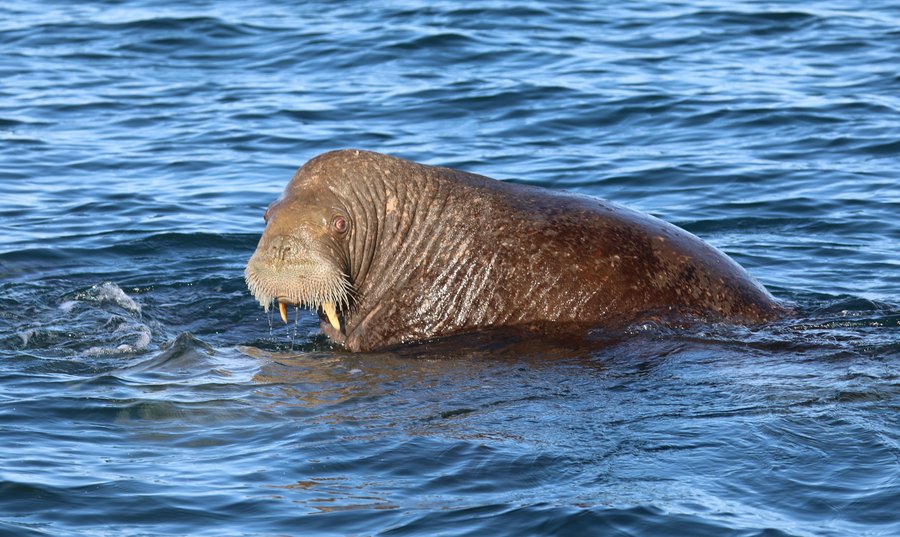
Increased noise levels are stressful for marine animals. (Photo: Kate Stafford)
Noisy spaces are also stressful ones for marine animals. After September 11, 2001, when commercial shipping decreased for several days, researchers who were studying North Atlantic right whales noticed something interesting in the fecal samples they were collecting. They analyzed stress hormones and found, “stress levels decreased linearly with decreases in ship noise, suggesting that the presence of ship noise was sort of this constant background stress,” Stafford says.
Researchers also use sounds to study the migratory patterns of marine mammals, learning which species are in specific areas at different times. They have found some are spending more time in the High Arctic, delaying migration, and some—like some bowhead whales—have even been found to overwinter there, perhaps to stay with the ice.
“Bowheads in particular, are an ice whale,” Stafford says. “They're heavily associated with ice, they give birth in the ice, they mate in the ice. So everything they do is really driven by the ice.”
Stafford says some species, like humpback and fin whales, are being seen further north. These two species are baleen whales, which means they filter zooplankton and small fish out of the water using their plates of baleen. Stafford says these changes may indicate additional food sources for them in these areas, suggesting a changing ecosystem. With additional species in an area, more animals could potentially be competing for certain types of food.
However, scientists don’t have all the answers yet. These regions are vast and challenging to study, and the situation is changing very quickly.
“This is all happening very rapidly—almost too rapidly for us to actually keep up with in terms of our scientific understanding,” Stafford says.
However, Stafford and colleagues will continue listening underwater to learn more about our changing world, as the sounds of climate change give us more clues.
